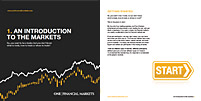

U.S. private employers add 164,000 jobs in December - ADP
Investing.com -- U.S. private employers added far more roles than expected in December, pointing to lingering resilience in the labor market that may impact how Federal Reserve policymakers approach potential interest rate reductions this year.
Private payrolls came in at 164,000 last month, rising from a downwardly revised mark of 101,000 in November, according to data from payrolls processor ADP. Economists had predicted a reading of 115,000.
The leisure and hospitality industries led the gains in private sector roles, ADP noted. Hiring at construction businesses also "held strong" despite headwinds from elevated borrowing costs, offsetting losses in the manufacturing sector.
Pay growth, meanwhile, eased to 5.4% from a rate of 5.6% a month earlier, extending a deceleration that started in September 2022.
"We're returning to a labor market that's very much aligned with pre-pandemic hiring," said ADP Chief Economist Nela Richardson in a statement. "While wages didn't drive the recent bout of inflation, now that pay growth has retreated, any risk of a wage-price spiral has all but disappeared."
On Wednesday, separate date from the Labor Department showed that the number of people quitting their jobs fell to its lowest level since 2021 in November. A slowdown in job-hopping could help defuse wage growth, which in turn may contribute to easing price pressures. U.S. job openings also dropped to an almost three-year low.
The ADP numbers serve as a precursor to the all-important non-farm payrolls report due out on Friday, which could offer further insight into the U.S. jobs picture. Cooling labor demand has been a key focus for the Fed, with officials arguing that such a trend may alleviate some upward pressure on inflation.
Markets have been on the lookout for signs of slackening price gains in the U.S., which may persuade the Fed to soon begin stepping away from an aggressive series of rate hikes. The Fed's December meeting, at which the central bank unveiled a more dovish outlook than previous projections, fed this optimism late last year.
But minutes from the gathering seemingly poured cold water on the notion. The account showed that while policymakers believed rates were "as likely at or near [their] peak," there was still an "unusually elevated" amount of uncertainty lingering around the U.S. economy heading into 2024. Rate-setters also suggested that more evidence would likely be necessary to confirm that inflation was sustainably moving down towards their stated 2% target.
Begin trading today! Create an account by completing our form
Privacy Notice
At One Financial Markets we are committed to safeguarding your privacy.
Please see our Privacy Policy for details about what information is collected from you and why it is collected. We do not sell your information or use it other than as described in the Policy.
Please note that it is in our legitimate business interest to send you certain marketing emails from time to time. However, if you would prefer not to receive these you can opt-out by ticking the box below.
Alternatively, you can use the unsubscribe link at the bottom of the Demo account confirmation email or any subsequent emails we send.
By completing the form and downloading the platform you agree with the use of your personal information as detailed in the Policy.






